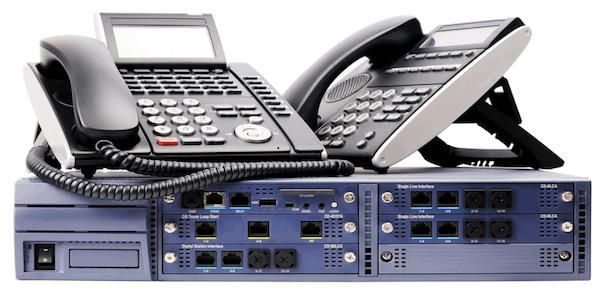Table of Contents

Many companies still depend on old-style PBX phone systems for their daily communication needs. These systems have been around for decades and have served their purpose. But as business communication continues to evolve, many organizations are now comparing Cisco CUCM vs Traditional PBX systems to decide which one fits their modern requirements better.
When we look closely at Cisco CUCM vs Traditional PBX, the difference is clear — one is built for today’s connected world, while the other struggles to keep up. Let’s explore why upgrading to Cisco CUCM has become a smart move for modern businesses.
Companies in Dubai looking to upgrade from a traditional PBX to Cisco CUCM can rely on FSI Information Technology for professional support. FSI provides IT AMC services in Dubai and and Call center solutions in Dubai, specializes in Cisco CUCM installation, helping businesses plan, implement, and maintain their unified communication systems. With their expertise, organizations can ensure a smooth transition from older PBX systems to a modern, efficient Cisco CUCM platform, minimizing downtime and maximizing performance.
1. Flexibility and Scalability

One of the main differences in Cisco CUCM vs Traditional PBX is flexibility. A traditional PBX system works with fixed phone lines and hardware, which limits how many users it can support. If a company grows, adding new lines means extra wiring, cost, and time.
With Cisco CUCM, it’s all digital. The system runs on the existing network using IP technology, which means new users or extensions can be added easily without complicated setup. Whether it’s a small business or a large organization, Cisco CUCM scales quickly and smoothly. This is a big reason why the Cisco CUCM vs Traditional PBX comparison often ends in favor of CUCM.
2. Mobility and Remote Work Support
When considering Cisco CUCM vs Traditional PBX, another big difference is mobility. A traditional PBX ties employees to their desk phones in the office. But today, teams work from home, on the road, or across countries.
Cisco CUCM supports remote work through softphones, mobile apps, and IP desk phones that connect from anywhere. Employees can make or receive calls as if they’re in the office, no matter where they are. This mobility and flexibility clearly show why many companies are choosing Cisco CUCM over traditional PBX setups.
3. Integration with Business Tools
The Cisco CUCM vs Traditional PBX comparison also highlights how CUCM integrates with modern business tools. Traditional PBX systems only manage voice calls and can’t connect with digital collaboration tools.
Cisco CUCM, on the other hand, integrates with Cisco Webex, Microsoft Teams, CRM systems, and other applications. This makes it easier for teams to chat, share files, and collaborate in real time — all from one platform. In Cisco CUCM vs Traditional PBX, CUCM clearly wins in terms of integration and modern communication capabilities.
4. Cost Efficiency and Maintenance
When you compare Cisco CUCM vs Traditional PBX, the cost factor is important. At first, a traditional PBX may seem cheaper since it uses existing wiring and equipment. But over time, it becomes expensive to maintain. Replacement parts are hard to find, and on-site service calls add to the cost.
Cisco CUCM reduces those costs. Most updates and configurations can be done remotely, and the system uses your existing data network for voice calls. Businesses save on maintenance, reduce downtime, and lower overall expenses. Over time, Cisco CUCM vs Traditional PBX shows that CUCM offers far better value.
5. Reliability and Security
In Cisco CUCM vs Traditional PBX, reliability is another major factor. Old PBX systems are prone to hardware failures and downtime. They also lack modern security features.
Cisco CUCM provides strong security through encryption, user authentication, and advanced redundancy. It ensures that your business communication stays secure and uninterrupted, even if one server goes offline. When it comes to reliability and data protection, Cisco CUCM vs Traditional PBX shows a clear winner — Cisco CUCM.
6. Future-Proof Technology
The future of business communication is digital. Many manufacturers have already stopped producing parts for traditional PBX systems, which means they’ll only get harder to maintain.
When comparing Cisco CUCM vs Traditional PBX, it’s clear that CUCM is a future-ready solution. It supports cloud integration, video conferencing, AI features, and continuous updates from Cisco. It’s designed to evolve with your business, not hold it back.
7. Smarter Business Communication
The Cisco CUCM vs Traditional PBX debate is really about how businesses want to communicate moving forward. Upgrading to CUCM means embracing a unified communication platform that combines voice, video, and collaboration tools into one system. It improves productivity, reduces downtime, and enhances customer experience.
For many organizations, the choice between Cisco CUCM vs Traditional PBX is no longer difficult — CUCM provides better performance, flexibility, and control in every way.
Conclusion
The comparison of Cisco CUCM vs Traditional PBX clearly shows how communication technology has changed. Traditional PBX systems may have served their time, but they can’t meet the demands of modern workplaces anymore. Cisco CUCM installation gives businesses the freedom to grow, connect remote teams, and stay secure with advanced communication features.
If your company is still using a traditional PBX, it might be time to make the switch. The benefits of Cisco CUCM go beyond better calls — it’s about smarter communication, lower costs, and a stronger future for your business. With FSI Information Technology’s support, businesses in Dubai can upgrade confidently and stay ahead in communication efficiency.
